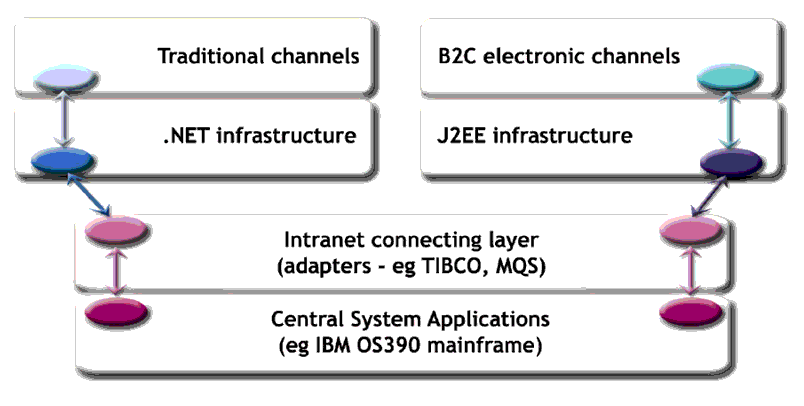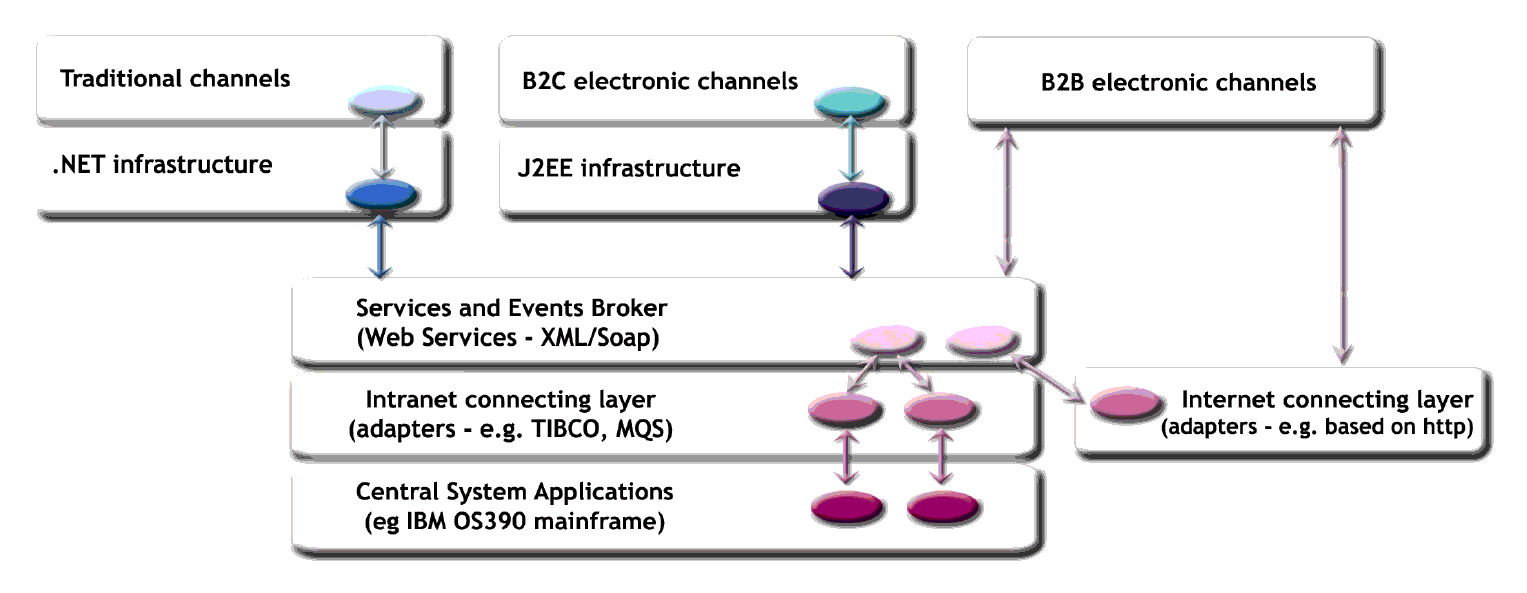From Legacy Systems to Services in the Net
Research content
Most companies rely, to a large extent, on some kind of legacy system. Faced with a growing demand for multi-channel products involving electronic access (e.g. internet banking), they are currently spending a considerable part of their IT budgets on integration projects aimed at providing interfaces between the existing legacy systems and the new applications. Traditional middleware can provide such things as data access points, but it cannot provide real application integration, the kind that endows the whole system with the flexibility needed to meet ever-changing business requirements. For instance, a typical bank will have a central system running on an IBM mainframe, traditional channels supported by client applications written in Visual Basic running on a Microsoft .Net platform, and business-to-client electronic channels based on Java applications:

This architecture is not satisfactory for a number of reasons:
- The client components (both .NET and Java) must encapsulate all the details (message format, etc) of the communication involved in calling the remote services.
- Because the adaptors are based on asynchronous protocols, the client components must also handle synchronization, possible failure, and other aspects related to the management of interactions.
- The two client components (.NET and Java) are unconnected in terms of business logic. Any new product or service must be incorporated into both components independently.
- The client components are sensitive to changes in the details of the message formatting associated with the transactions in the central system. Even a trivial change may result in extensive (and independent) modifications to the code of both components.
The project will develop a new strategy based on web services through which a common interface between applications can be provided, allowing the user to interact seamlessly with applications running on various platforms (some applications may be running, say, on a Microsoft platform, others on an IBM mainframe). In the intended architecture, a layer of web services will incorporate elements of business logic common to all channels and act as coordination agents that orchestrate the dominant business rules. This layer will handle all the communication details of Intranet as well as Internet, including message formatting and failure handling. By relying on XML/Soap standards, the web services are insulated from most message format changes occurring in the central system, and neutral in terms of the programming language used. Ultimately, a dynamic infrastructure will be put in place to activate business rules that orchestrate the execution of services.

Team
The research component of the project takes place at Leicester with the support of ATX staff. The team at Leicester consists of M El-Ramly, J L Fiadeiro (coordinator), R Heckel, P Kosiuczenko, and S Reiff-Marganiec.
In addition to these researchers, the team comprises two fellows seconded by ATX to work in Leicester, each for the period of 2 years. The appointment of the first fellow is due now and ATX is recruiting specifically a researcher with 4-year experience in industry to work for the project.
Training
The project has a very strong training component that, besides the individual training of the fellows seconded by ATX, includes the participation of ATX staff in the delivery of postgraduate modules at Leicester, and the delivery of short courses by Leicester staff in Portugal. So far, the following training actions took place:
- Tutorial given by ATX staff as part of the MSc module CO7206 (System Re-engineering)
- Tutorial on Web Service technologies given in Portugal.
|
